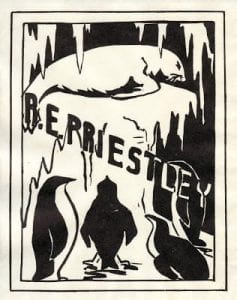Taking on the Universe
Special Collections Blogger Anastasia Vassiliadis interviews Kristin Headlam, the artist behind “The Universe Looks Down”, a series of etchings currently on display in the Noel Shaw Gallery.
Discoveries, reflections and news from across our collections of Rare Books, Prints, Rare Music, East Asian and Map Collections and the University of Melbourne Archives.
Special Collections Blogger Anastasia Vassiliadis interviews Kristin Headlam, the artist behind “The Universe Looks Down”, a series of etchings currently on display in the Noel Shaw Gallery.
Adapted from a presentation given at the symposium ‘Bernie Taft and 1968: Tanks in Prague, Turmoil in Australian Universities’, Friday 24th August 2018 by Jane Beattie, Assistant Archivist, University of Melbourne.
To commemorate the 80th anniversary of the outbreak of the Spanish Civil War in 2016, I wrote a blog post about Lloyd Edmonds. Lloyd’s family donated his letters, written mostly to his father, from the battlegrounds in Spain. Lloyd was studying in London when Franco invaded and felt so strongly in the Republican cause, and that Spain should not fall to fascism, that he joined the International brigade, along with 64 other Australians volunteering in Spain. Soon after this anniversary, the University of Melbourne Archives (UMA) ran a tutorial for a Hispanic Cultural Studies class, introducing students to the Archives using Lloyd’s letters and other material held at UMA about the war. Continue reading “Vicarious communist: a reflection on the empathetic archivist” →
Labelled ‘the father of history’ by Cicero and ‘the father of lies’ by Plutarch, Herodotus makes for one of the most intriguing writers of the ancient world.
Mihai Bacaran
The Judges’ Report in the 1948 issue of DAUB — consists of two conflicting assessments of the work submitted by students for the Travelling Scholarship and the National Gallery Art School Prizes for 1947.[1] Three of the judges: Douglas Dundas, Eric Thake and the then director of the National Gallery of Victoria, Daryl Lindsay, sign a report that praises the welcomed diversification of techniques, a trend that encourages “a freer expression of thought in all mediums.” The fourth judge, Alice M. E. Bale, the only woman in the judging panel, concludes in a dissenting report that: “the experimentalizing commended by the other judges is premature,” and recommends that the students should first gain “a sound knowledge of natural appearances and the ability to render them.” This dispute is representative of a larger antagonism between the modern and traditional ways of painting, and their respective supporters which extends beyond the doors of the Art School, to the status of modern art in mid-century Melbourne in collecting institutions, the university and the wider public sphere. Such is the controversy, that the results of the competition generate articles in Melbourne newspapers, for example “Modernist” Picture Wins £900 (The Argus, Melbourne, Vic.: Fri 19 Dec 1947, Page 3) and Problem in Art Awards (The Argus, Melbourne, Vic.: Sat 20 Dec 1947, Page 43).
Andrew Fuhrmann

There’s no doubt that Raymond Priestly (1886-1974) had a fondness for penguins. Open any of the fourteen volumes of his Australian diaries (1935-1938) and there they are on the inside cover. The personal bookplate of the eminent geologist and Antarctic explorer depicts an icy scene in bold black and white with a fur seal surrounded by four rather stout penguins. Continue reading “Priestley’s Penguins” →
Number of posts found: 383
This site uses and shares cookies and similar technologies to personalise your experience, advertise to you and provide content from third-parties as well as analyse our usage. You consent to our use of such technologies by proceeding. You can change your mind or consent choices at any time. Visit our Privacy Statement for further information.
